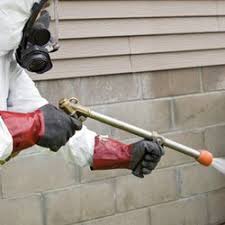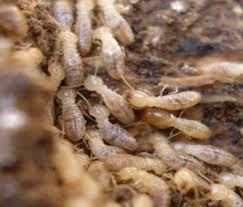Top Guidelines Of Termite Control Review
This webpage describes the three types of subterranean termite, drywood and dampwood.
Termites are classified according to their nesting and feeding habits: subterranean, drywood and dampwood.
Subterranean termites are the most frequent kind of termite that are one of the most destructive pests worldwide and infests timber. Outdoors they infest timber that is dead in contact with the soil, such as stumps, fallen trees and branches. They prefer wood that has some degree of rust which makes it easier for them to digest it, even though they can digest wood that is sound. .
Some Of Termite Control Services In Adelaide
Subterranean termites will need to be near a supply of moisture to live, where moisture can be easily acquired by them in the soil, making their nests in or near. They tunnel through dirt to access moist soil or wood and that they tunnel into the ground to achieve moisture. .
Dirt is used by the termites as a substance to construct nests and shelter tubes, which are made up of faeces, wood, dirt and saliva. Some species construct carton nests above ground and construct shelter tubes (also referred to as sand tubes) to connect the nest to the ground.
Foraging is dependent on the weather, with activity in winter or dry conditions and higher action in summer . In tropical areas they could forage with peaks through warmer weather, wetter conditions.
Termite Control Services In Adelaide Can Be Fun For Everyone
Drywood termites live in small colonies, generally less than 1000 people inside parts of timber. There might be several tiny colonies within one piece of wood or object. They can feed across annual rings as is typical termites, so the galleries don't follow the grain of wood, but they are inclined to steer clear of heartwood.

Colonies can grow for many years undetected until the swarm or the timber breaks. Until the population reaches a critical point the alates, which are may have a peek at these guys not be made for decades in a new colony. They leave the nest discover a site in order to mate and start a new colony, usually not and to set up. .
Dampwood termites infest timber that stays moist due to contact or, for instance, through a water flow in a building. They are most likely to infest timber that is outside stump or logs in contact.

How Termite Control Specialists can Save You Time, Stress, and Money.
Termites live inside the timber they create galleries that are open and feed . As with drywood termites, they may infest timber for years until they're discovered, which is most likely when the alates swarm from a colony that is mature. Swarming may occur over a few months, with species swarming at different times.
They're an indication of a moisture problem if they're found at a building. They are pests that are minor and can be controlled in structures by removing the supply of moisture. In trees they have a tendency to feed on wood.
Termite species can be tricky to identify, even for the specialists. Identification is usually dependent on the soldiers, which is the caste that has the most distinguishable features.
Of the pest species it is the Coptotermes species that are public enemy number 1 in Australia.
The Main Principles Of Termite Control Specialists
The head of the soldier is yellowish and rectangular with darker, smooth mandibles. Body is up to 7 mm long. It is easily confused with two other native Coptotermes species, including C. frenchi and C. lacteus (Victoria Museum)
The soldiers produce a white sticky liquid out of a opening (fontanelle) on front of head when defending the nest from attack.
Coptotermes species generally do not construct mounds, but in other tropical regions of Australia and Queensland. They nests in trees, stumps, sticks, buried timber spaces, around houses under buildings and in walls. Trees for nesting are peppercorns , various eucalypts and oaks. The colony is located in the root crown or the part of their trunk.
How Termite Control Specialists can Save You Time, Stress, and Money.
Although Mastotermes darwiniensis is the destructive locally across its limited range in tropical northern Australia coptotermes acinaciformis have become the termite species in Australia overall. C. acinaciformis strikes all lumber structures and damages forest and ornamental trees in addition to fruit trees.